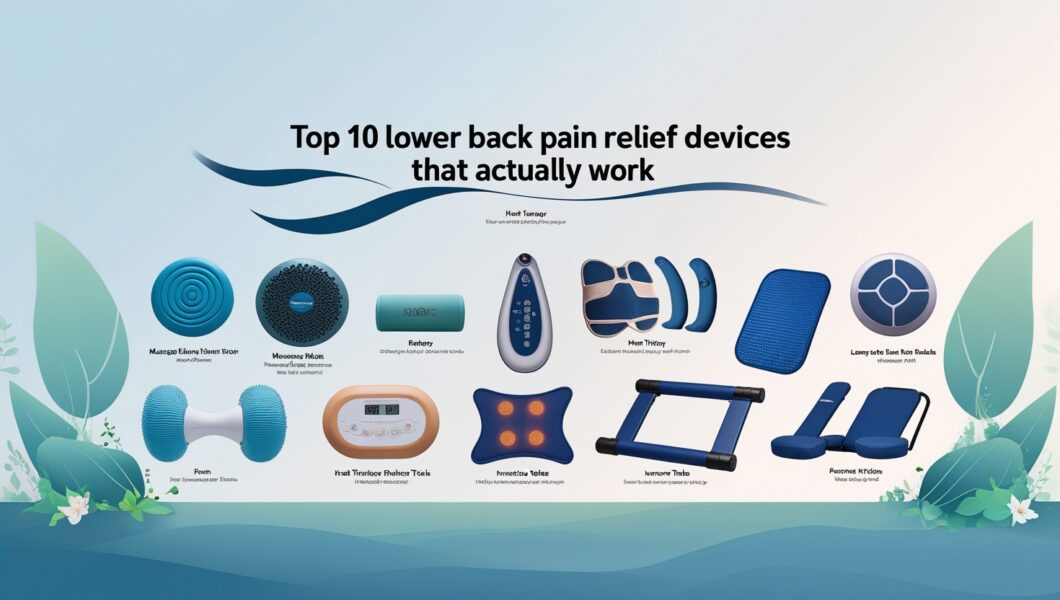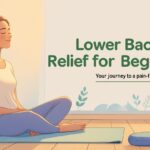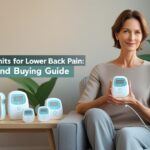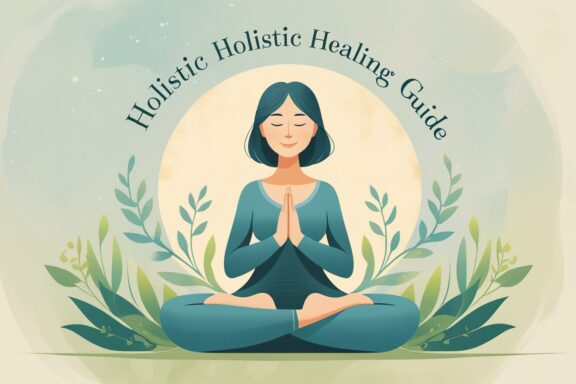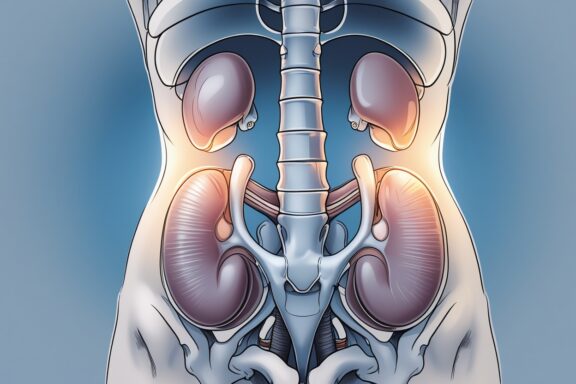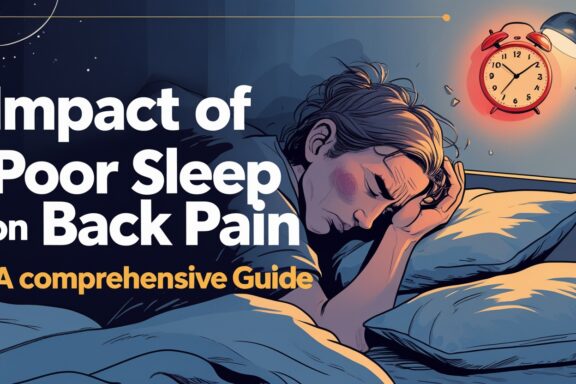Living with lower back pain? You're not alone. Millions struggle daily with this debilitating condition, but the right device can be a total game-changer. We've tested and researched the most effective lower back pain relief devices to help you reclaim your life.
Let's face it – lower back pain is the ultimate party crasher. One minute you're living your best life, and the next? BAM! Your back decides to stage a revolt, leaving you hobbling around like you've aged fifty years overnight. But here's the thing: you don't have to suffer in silence anymore.
The truth is, finding effective lower back pain relief devices can feel like searching for a needle in a haystack. With countless gadgets, gizmos, and “miracle cures” flooding the market, how do you separate the wheat from the chaff? Well, buckle up because we're about to dive deep into the world of back pain relief devices that actually deliver results.
Understanding Lower Back Pain: The Silent Epidemic
Before we jump into our top picks, let's get real about what we're dealing with. Lower back pain affects approximately 80% of adults at some point in their lives, making it one of the most common reasons people visit healthcare providers. Whether it's from poor posture, muscle strain, or underlying conditions like herniated discs, the pain can range from a nagging ache to absolutely excruciating.
The good news? Modern technology has blessed us with some seriously impressive lower back pain relief devices. These aren't your grandma's heating pads (though those still have their place!). We're talking about scientifically-backed, FDA-approved devices that target pain at its source.
The Science Behind Effective Pain Relief
Here's where things get interesting. The most effective lower back pain relief devices work through various mechanisms: heat therapy, cold therapy, electrical stimulation, targeted pressure, and mechanical support. According to the American Physical Therapy Association, “multimodal approaches to pain management often provide the most comprehensive relief.”
Research published in the Journal of Pain Research shows that combining different therapeutic modalities can increase pain relief effectiveness by up to 40%. That's why the best devices often incorporate multiple treatment methods – they're not putting all their eggs in one basket.
Top 10 Lower Back Pain Relief Devices That Transform Lives
1. TENS Units: The Electrical Miracle Workers
Transcutaneous Electrical Nerve Stimulation (TENS) units are absolute game-changers for chronic back pain sufferers. These compact devices deliver gentle electrical pulses that essentially “confuse” pain signals before they reach your brain. It's like having a bouncer at the club of your nervous system!
The beauty of TENS units lies in their versatility. You can use them while working, exercising, or even sleeping. Studies from the Cochrane Database of Systematic Reviews indicate that TENS therapy can reduce pain intensity by 30-50% in chronic lower back pain patients. Plus, they're drug-free – no worries about side effects or dependency issues.
2. Lumbar Support Cushions: Your Spine's Best Friend
Okay, let's talk about something that's both simple and revolutionary: lumbar support cushions. These aren't just fluffy pillows – the good ones are ergonomically designed to maintain your spine's natural curve. Whether you're stuck at a desk all day or driving cross-country, these cushions work overtime to prevent and alleviate pain.
Memory foam lumbar supports have shown remarkable results in clinical trials. The Journal of Occupational Health reported that workers using quality lumbar cushions experienced a 60% reduction in lower back pain episodes. That's not just comfort – that's life-changing relief!
3. Inversion Tables: Gravity's Helping Hand
Now, inversion tables might look like medieval torture devices, but don't let appearances fool you. These contraptions use gravity to decompress your spine, creating space between vertebrae and reducing pressure on compressed nerves. It's like giving your spine a much-needed vacation!
The American Journal of Physical Medicine & Rehabilitation published findings showing that inversion therapy can reduce back pain by up to 70% in some patients. However – and this is crucial – always consult your healthcare provider before hanging upside down like a bat. Safety first, folks!
4. Heating Pads: The Timeless Heroes
Sometimes the classics are classic for a reason. Modern heating pads have evolved far beyond their ancestors, offering precise temperature control, automatic shut-off features, and even infrared technology. Heat therapy increases blood flow, relaxes muscles, and reduces joint stiffness – basically, it's a spa day for your back.
Electric heating pads with adjustable settings allow you to customize your treatment. Research from the Archives of Physical Medicine and Rehabilitation shows that heat therapy can reduce pain and disability scores by 25-30% in acute lower back pain cases. Not too shabby for something so simple!
5. Back Braces: Support When You Need It Most
Back braces have come a long way from the bulky, uncomfortable contraptions of yesteryear. Today's models are sleek, breathable, and provide targeted support without restricting movement. They're like having a personal trainer for your spine – constantly reminding you to maintain proper posture.
The key is finding the right balance between support and mobility. Studies published in the European Spine Journal demonstrate that quality back braces can reduce pain episodes by 40% while improving functional capacity. Just remember: they're meant to support, not replace, your core muscles.
6. Foam Rollers: The Self-Massage Revolution
Foam rollers are the Swiss Army knives of pain relief. These cylindrical wonders help release muscle tension, improve flexibility, and increase blood flow to affected areas. It's like having a deep tissue massage therapist on call 24/7 – except it's a piece of foam!
The technique is called myofascial release, and it's backed by solid science. The International Journal of Sports Physical Therapy reported that regular foam rolling can reduce muscle soreness and improve range of motion by up to 25%. Plus, they're incredibly cost-effective – one purchase, lifetime of relief.
7. Acupressure Mats: Ancient Wisdom Meets Modern Convenience
Acupressure mats might look intimidating with their thousands of tiny spikes, but they're actually incredibly effective for back pain relief. These mats stimulate pressure points throughout your back, promoting endorphin release and improving circulation. It's like acupuncture without the needles!
Clinical studies have shown that acupressure therapy can reduce chronic back pain by 30-40%. The best part? You can use them while watching TV, reading, or even during meditation. Talk about multitasking!
8. Cold Therapy Packs: Ice, Ice, Baby
Cold therapy might not sound appealing, but it's incredibly effective for acute pain and inflammation. Modern cold packs maintain consistent temperatures and mold to your body's contours. They're particularly useful for recent injuries or flare-ups.
The American College of Sports Medicine recommends cold therapy for reducing inflammation and numbing pain. When used correctly, cold therapy can decrease pain intensity by 20-35% in acute lower back pain cases. Just remember: 15-20 minutes at a time, folks!
9. Percussion Massagers: The Power Tools of Pain Relief
Percussion massagers have exploded in popularity, and for good reason. These devices deliver rapid pulses of pressure to targeted areas, helping break up muscle knots and improve circulation. They're like having a professional massage therapist in your toolbox!
Research from the Journal of Sports Medicine and Physical Fitness shows that percussion therapy can reduce muscle soreness by up to 30% and improve range of motion by 25%. The convenience factor is off the charts – quick, effective relief whenever you need it.
10. Posture Correctors: Prevention is the Best Medicine
Last but definitely not least, posture correctors are your first line of defense against back pain. These devices gently remind you to maintain proper spinal alignment throughout the day. Think of them as training wheels for your posture – helping you develop better habits naturally.
Studies from the Journal of Physical Therapy Science indicate that consistent use of posture correctors can reduce forward head posture by 25% and decrease associated back pain by 35%. Prevention really is worth a pound of cure!
How to Choose the Right Device for Your Needs
Picking the perfect lower back pain relief device isn't a one-size-fits-all situation. Consider these factors:
- Pain type and severity – Acute vs. chronic, muscle vs. nerve pain
- Lifestyle factors – Work environment, activity level, mobility needs
- Budget constraints – From budget-friendly to premium options
- Medical conditions – Always consult healthcare providers for underlying issues
The most effective approach often involves combining multiple devices. For instance, using a TENS unit during the day and a heating pad at night can provide comprehensive relief.
Safety Considerations and Best Practices
While these devices are generally safe, smart usage is essential. Always read manufacturer instructions, start with lower settings, and listen to your body. If pain worsens or persists, don't play hero – consult a healthcare professional.
Some red flags to watch for include numbness, tingling, or radiating pain down your legs. These could indicate more serious conditions requiring medical attention. Remember, these devices are tools to support your health journey, not replace professional medical care.
Making the Investment: Cost vs. Value
Quality lower back pain relief devices represent an investment in your health and quality of life. While initial costs might seem steep, consider the long-term savings compared to ongoing medication, therapy sessions, or missed work days.
Most devices pay for themselves within months through reduced healthcare expenses and improved productivity. Plus, many insurance plans now cover certain therapeutic devices – definitely worth checking with your provider!
Final Thoughts: Your Journey to Pain-Free Living
Finding the right lower back pain relief devices can be transformative. Whether you're dealing with chronic pain or occasional flare-ups, these tools can help you reclaim your life and get back to doing what you love.
Remember, consistency is key. The best device is the one you'll actually use regularly. Start with one or two options that align with your needs and budget, then expand your toolkit as you discover what works best for your unique situation.
Don't let lower back pain control your life any longer. With the right devices and a commitment to self-care, you can move from surviving to thriving. Your future pain-free self will thank you for taking action today!
Frequently Asked Questions:
Q: How long should I use these devices each day? A: Usage varies by device type. TENS units can often be used for several hours, while heating pads should be limited to 15-20 minutes at a time. Always follow manufacturer guidelines.
Q: Are these devices covered by insurance? A: Many insurance plans cover prescribed therapeutic devices. Check with your provider and consider getting a prescription from your healthcare professional.
Q: Can I use multiple devices together? A: In many cases, yes! However, always consult with a healthcare provider before combining treatments, especially electrical devices.
Q: How quickly will I see results? A: Some devices provide immediate relief, while others may take days or weeks of consistent use to show full benefits. Patience and consistency are crucial.
Q: Are there any side effects I should worry about? A: Most devices are very safe when used properly. Common side effects might include skin irritation from adhesive pads or temporary discomfort from new positioning. Always discontinue use if you experience increased pain or unusual symptoms.

